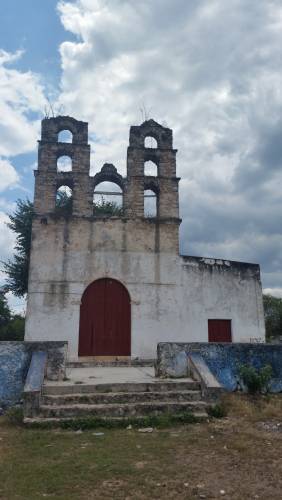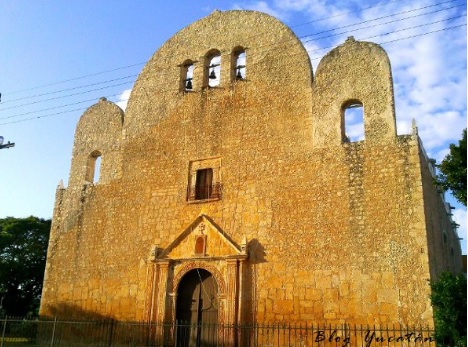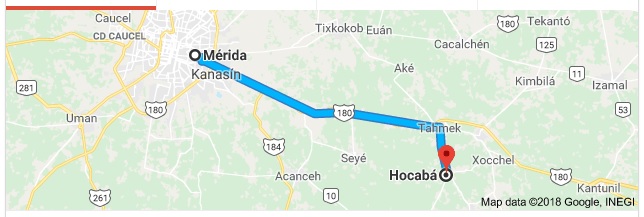“The theft of sacred art in the country is not so frequent, but it occurs because there is a black market. Puebla is the state with the highest incidence in this type of crime, followed by Tlaxcala, State of Mexico, San Luis Potosí, Hidalgo, Guanajuato, Zacatecas, Morelos and Jalisco. Although Yucatan does not figure in the first places, it is not exempt of this type of crimes”, siad priest Jorge Martínez Ruz, spokesman for the Archdiocese of Yucatán.
Although Mexico is the second country with the largest number of Catholics in the world, it occupies the first place in sacred art theft in all Latin America. According to data from the Attorney General’s Office of Mexico City, in the last 15 years at least 250 robberies of pieces of historical value have been recorded within Catholic churches across the country.
42% of the robberies to temples are committed by organized groups that are dedicated to the international traffic of pieces of art and unfortunately, they operate with absolute impunity in Mexico.
Mexico ranks first in robberies in sacred art in Latin America
Also in past years, Mexican legislators asked the Attorney General of the Republic to create an agency specialized in investigating this crime, because in the last 12 years the disappearance of around one thousand pieces of Catholic temples has been reported, of which 80% is sacred art, and only 10% has been recovered.
According to the INAH, it is estimated that in Mexico there are more than 19 thousand religious spaces, all of them built before the Mexican Independence, where most of the cultural heritage of the XVII and XVIII centuries is located. This represents an existence of more than 4.5 million art pieces; however, only 1.5% of these stocks are properly registered.
Sacred Art Commission in Yucatan
“To walk and admire the Churches of Yucatan, as well as their sacred pieces, is to take a tour through the history and culture of the Yucatecan people”, indicated priest Jorge Martínez Ruz, spokesman for the Archdiocese of Yucatán.
“The archdiocese has a Sacred Art commission, and this watches over the protection of the works and makes sure the pieces are properly guarded; Father Oscar Cetina Vega is in charge of this area and he has a team of assistants who support him and who work together to take care of this valuable historic heritage,” Martínez Ruz continued.

Church of Hocabá Yucatan (Archive)
In the Church of Conkal there is a Sacred Museum where people can admire many valuable sacred works of art, but it is noteworthy that in the churches of the interior of the state, such as Izamal, Maní and Valladolid, you can see altars and paintings of great historical and cultural value.
On the other hand, priest Óscar Cetina Vega, rector of the Cathedral of Mérida said: “We are part of the liturgy Commission, we are just a section, though; because the Liturgy Commission involves: music, sacred art, and sanctuaries. ”
To carry out this work “we have several departments: coordination, technical management, projects, construction, structural design, historical archive, ecclesiastical museums, culture and dissemination, legal, and restoration. The latter watches over the altarpieces, the images, and sacred art in terms of real estate. ”
Cetina Vega explained that in Yucatan there are more than 300 churches with a historical, cultural, architectural and religious value; like that of Izamal, Maní, Oxcutzcab, and the Cathedral of Mérida of course.
“There are very interesting altarpieces with great value, such as those in Izamal and Maní. The Virgin of Izamal can be considered the oldest, this work of sacred art dates from the beginning of the colonial era, approximately from the early seventeenth century.
The Mérida Cathedral is one of the architectural jewels of Mexico, with a significant historical value, since it was completed in 1598. “And the Virgin of Yucatan, which is found there, is very venerated and very dear. There is also the Church of Valladolid, which has a very important presence in the east of the State. And there are other great and beautiful churches like that of Hunucmá, or Peto,” Cetina Vega added.
On the other hand, the rector of the Holy Cathedral of Mérida explained that although in Yucatan it is not common for sacred art to be stolen: “We’ve had isolated incidents; some years ago an image of San José was stolen at the Santa Lucia church. We immediately notified the Federal Public Ministry”, the priest continued.
In 2014 the inhabitants of the Maya municipality of Hocabá awaited the call to the traditional mass in the Catholic temple of San Cristóbal, but the bells never riag, because they were stolen.

Fachada Iglesia Conventual Conkal San Francisco Asis Conkal, Yucatan (blog yucatán)
In the church of San Francisco, in the same community of Hocabá, an old church bell also disappeared, when it was struck by lightning and lowered for repair.
In Mérida, the popular church of Monjas – whose official name is the Expiatory Temple of Our Lady of Consolation – was also the object of the theft of a replica painting of the Virgin Mary of the 19th century.
From 2013 to date, the theft of sacred art in Yucatan, mainly in churches or Catholic chapels in Maya rural areas of the state, has increased, according to formal complaints filed before the Public Prosecutor’s Office.
Since 2013, cleric staff responsible for Catholic sites have submitted about a hundred complaints, and only one case has been resolved: The return of a gold rosary. The thief received only a six-month sentence and then was released.

The town of Hocabá is located 45 kilometers (28 miles) east of Mérida. Image: Google
The biggest theft of religious art happened in the town of Hocabá, in 2014 the inhabitants of that municipality were surprised to discover that the three bells of the old church of San Cristóbal did not ring out calling the morning mass.
The church of Hocabá, according to the catalog of religious constructions of Yucatan, was built in the seventeenth century and its three bells were bronze with other metals, but also forged in the 1600s.
TYT Newsroom from: laverdadnoticias.com

